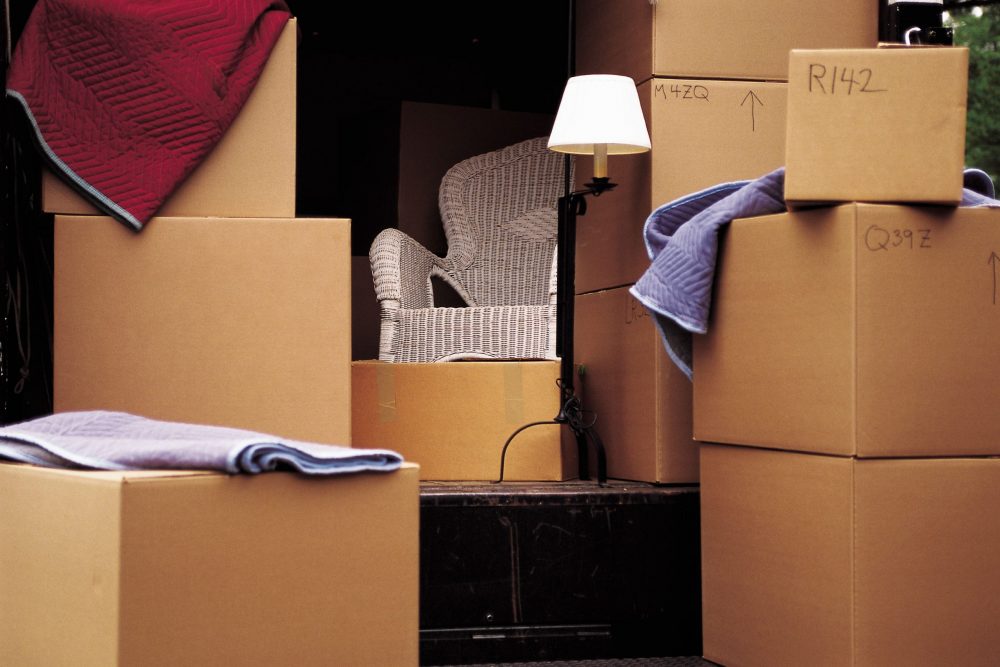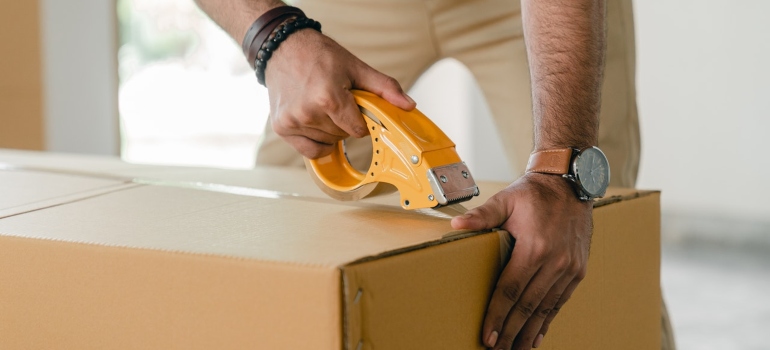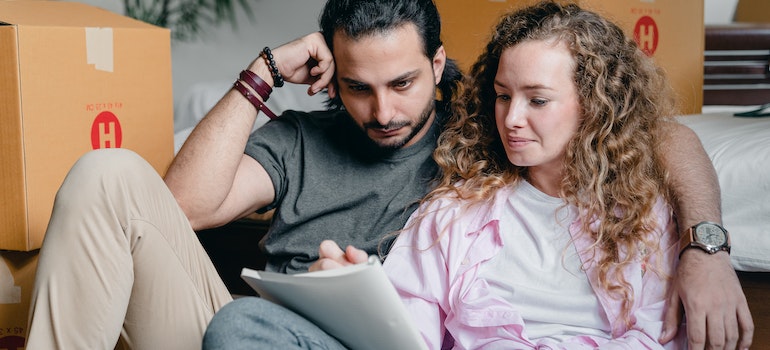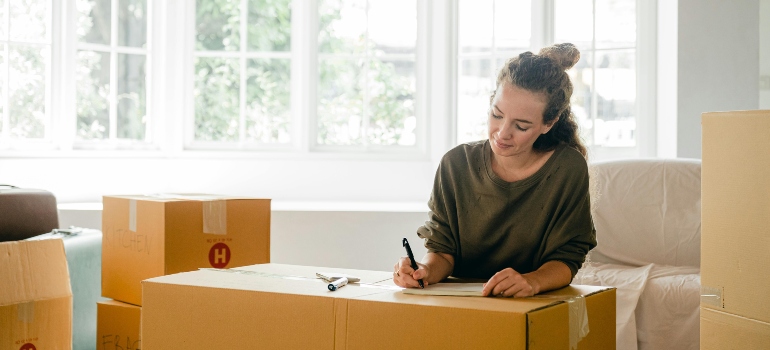The different tactics to pack your household
get a quote
Packing your home for storage or moving demands full attention because every room holds countless decisions and the clock keeps ticking. So, instead of letting the process overwhelm you, embrace it as an opportunity to reset, organize, and simplify your belongings. Practical methods ensure fragile items remain safe, bulky furniture fits seamlessly into the plan, and essential belongings stay accessible in self storage Seattle residents trust. Therefore, here are some thoughtful tactics to pack your household that transform the chaos into a step-by-step journey where every box has its purpose!
Start with a packing station
To kickstart your packing process, create a dedicated packing station. Choose a flat surface, such as a table or countertop, and stock it with essentials such as sturdy boxes, packing tape, scissors, bubble wrap, packing paper, and markers. Keeping everything in one place ensures you won’t waste time searching for supplies. The station will also serve as a workspace for preparing delicate items or assembling specialty boxes, making the process more streamlined.
Use the layering method
The layering method helps protect your fragile and mixed items while maximizing box space. Think of it like building a protective cocoon inside the box:
- Start with a cushion at the bottom (use crumpled paper, bubble wrap, or towels).
- Place heavy items as the first layer.
- Add a second cushion before stacking lighter, fragile items on top.
- Fill gaps with soft materials like socks or packing peanuts to prevent movement.
Finally, mark these boxes properly on all sides for extra precaution.
Pack in tiers for furniture
Large furniture requires a tiered approach to packing. Start by disassembling items like beds, tables, or shelving units. Secure screws, bolts, and small parts in labeled plastic bags, and tape them to the furniture pieces they belong to. Wrap each piece in moving blankets or shrink wrap to protect them from scratches and dirt. When loading the moving truck or your door-to-door storage pods in Seattle, place the heaviest furniture at the base, stacking lighter pieces on top to maintain balance and stability.

Use the drawer method
The drawer method is a time-saving hack that eliminates the need to empty dressers or similar furniture. Keep lightweight items, like clothing or linens, inside drawers, and secure them with plastic wrap to prevent shifting. For heavy furniture, remove drawers and transport them separately. It reduces the risk of damage to both the furniture and your belongings.
Bundle cables and electronics
Packing electronics requires extra care to avoid damage or confusion during reassembly. Bundle cables neatly using twist ties or velcro straps and label them for easy identification. Take photos of the back of your electronics—such as TVs, computers, or gaming consoles—before disconnecting cords.
Implement the “rolling method” for clothes
Clothing can take up significant space, but the rolling method saves room and prevents wrinkles. Roll each garment tightly and pack them into suitcases, duffel bags, or vacuum-sealed bags. For hanging clothes, invest in wardrobe boxes. Such boxes allow you to move clothes directly from the closet to the box, keeping them wrinkle-free and ready to hang at your new home.
Vacuum seal soft items
Bulky soft items like comforters, pillows, and winter coats can take up unnecessary space if packed normally. Vacuum-sealing compresses these items, protecting them from dirt and moisture while reducing their size. Use heavy-duty vacuum-seal bags for items you won’t need immediately, and label them to avoid confusion during unpacking.

Take inventory
Keeping track of what’s inside each box ensures nothing gets lost in the shuffle. Create a detailed inventory list, either on paper or digitally. Number your boxes and record their contents for easy tracking. For valuables, take photos and note their condition before packing.
Group and label by priority
Not all items need to be unpacked immediately, so prioritize your boxes to save time and energy. Besides, good labeling is one of the tactics to pack your household that saves time and effort during unpacking. For fragile items or high-priority boxes, add extra notes like:
- This Side Up: Ensures items are kept upright.
- Open First: Indicates essentials needed immediately.
- Heavy – Team Lift: For boxes requiring more than one person to carry.
- Room-Specific Labels: Like “Kitchen,” “Bedroom,” or “Living Room.”
- Fragile/Handle with Care: For delicate items requiring gentle, careful handling.
- Seasonal Items: Like “Winter Clothes” or “Holiday Decor” ready for short term storage Seattle unit.
- Priority Levels: Use “Priority 1” for urgent items, and “Priority 2” for less important ones.
- Breakables – Keep Upright: For fragile items needing upright transport.
- Inventory Number or QR Code: Link to a detailed contents list.
- Destination Zone: Examples: “Pantry,” “Closet,” or “Garage.”
- Do Not Stack: For boxes with crushable items.
To make it even easier, use a color-coded system by assigning a color to each room in your new home.
Tackle small items with bags
Small items like jewelry, screws, or keys are easy to lose during a move. Keep them organized by storing them in resealable bags. Label each bag clearly and place them in a box marked “small parts” for easy access later. It’s especially useful for keeping hardware from disassembling furniture together or organizing tiny essentials you’ll need immediately.

Use portable storage units
If you need extra flexibility during your move, consider mobile storage units. Practical, portable Kirkland self storage containers can be delivered to your home, giving you the freedom to pack at your own pace. Once you’re ready, the unit(s) can be transported to your new location or stored temporarily. On-demand storage units are also great for staging your home if you’re selling it, as they allow you to declutter and keep your space presentable for potential buyers.
Load the truck strategically
Packing a moving truck is like solving a puzzle, and how you load it matters. Start by placing heavy furniture and large boxes at the bottom, creating a sturdy base. Lighter boxes and fragile items should go on top. Strap everything securely to prevent shifting during transit. In case you’re using a portable storage unit to boost your tactics to pack your household, apply the same logic to keep everything stable and organized.
